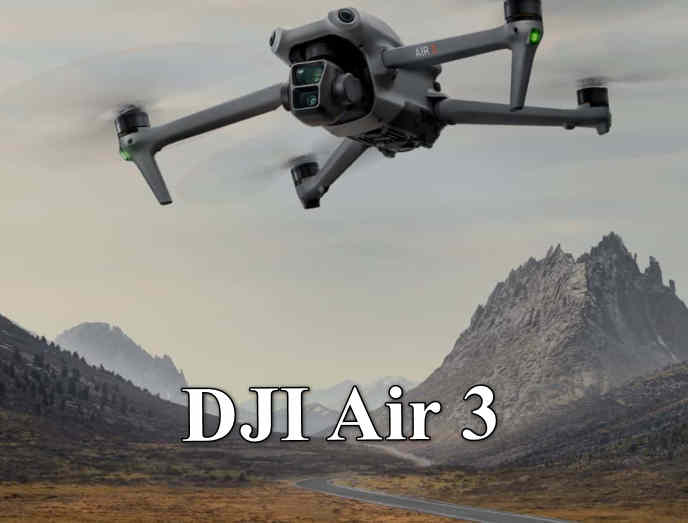DJI Air 3 Long-Term Review
Hello everyone, I’m Sean from Air Photography. Today I’m excited to share my long-term review of the DJI Air 3. Over the past few weeks, I’ve published reviews of the DJI Mini 4 Pro. the DJI Osmo Action 4. Now let’s talk about the DJI Air 3. Although this drone has been on the market for about seven months. it’s still packed with a lot of impressive features for its size and price. Coincidentally. it arrived just as I was heading on a five-week trip to the East Coast last summer which gave me the perfect opportunity to capture some breathtaking footage.
DJI Air 3 Dual-Camera System
When the Air 3 was first announced. I have to admit I was a little disappointed to see the 1-inch sensor missing from the DJI Air 2S. The Air 2S stood out because of its impressive sensor size in such a compact drone. However, after spending some time with the Air 3 initial doubts were quickly dispelled. The footage you get from this drone is truly spectacular. Sensor size is important. But it’s only one part of the equation for high-quality imaging, and DJI has done a great job with the Air 3’s camera technology.

The Air 3 has a dual-camera system that is a true game-changer. You get a wide-angle lens for everyday shots and a three-fold telephoto lens for more creative shots. This telephoto lens allows you to zoom in on your subject without losing quality and it also provides that much-desired compression effect that makes backgrounds appear closer. I found the 3x camera more useful than I initially expected.
Both cameras use 1/1.3-inch sensors and can shoot in D-log. They all also support the Intelligent Flight feature, making it easy to get creative with your footage. Whether you’re editing on the wide or telephoto lens. you’ll be able to color-grade your shots to ensure a consistent look.
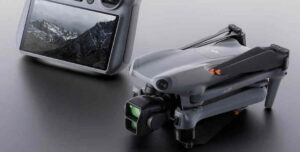
For social media enthusiasts the Air 3 features a vertical shooting mode. Unlike the Mini 3 Pro or Mini 4 Pro. where the camera physically rotates, the Air 3 lets you set the aspect ratio to vertical through its software. Although this mode limits the resolution to 2.7K. it’s more than enough for social media content. Vertical mode also darkens the edges of the screen so you can frame your shots and keep an eye out for potential obstacles.
Notable improvements of DJI Air 3
The Air 3 includes a number of thoughtful improvements and new features. First, everything now charges via USB-C which makes things easier. Gone are the days of carrying multiple bulky chargers. one USB-C charger handles all your drones. DJI’s charging hub for the Air 3 is a great addition making battery management a breeze. It not only charges your battery but also acts as a power bank allowing you to charge your phone when needed. A great feature of this hub is its ability to integrate power from multiple batteries into one which I’ve found useful for extending flight time.
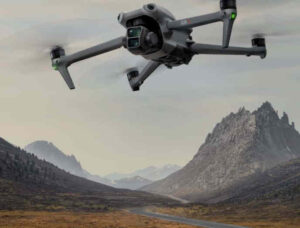
The Air 3 is also impressively quiet. This is important for those who want to fly without attracting too much attention. Its sleek design is my favorite of DJI’s offerings. When folded, it’s compact and easy to carry making it ideal for travel or hiking. The Fly More combo includes a very useful bag that I often use as a daypack even when I’m not carrying the drone.
For those who prefer to fly with goggles, a recent firmware update has made the Air 3 compatible with the Goggles Integra, Goggles 2 DJI Motion 2. Although it is not yet compatible with a standard controller. I hope that changes soon. DJI has also released several firmware updates adding features like the AR element first introduced with the Mavic 3 series. These include drone shadows, AR return-to-home routes and Vision Assist, which enhance navigation and safety.
Price of DJI Air 3
USD$1,099
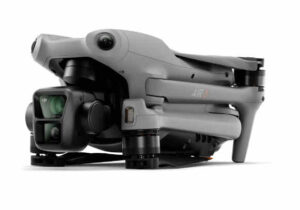
DJI Air 3 Release date
the DJI Air 3 are release on July 2023.
Flight performance
The Air 3 offers impressive flight time rated at up to 46 minutes. During real-world use you can expect around 39 minutes of flight, depending on conditions. It supports all the intelligent flight modes you would expect including cruise control and night mode. A recent update introduced 360-degree tracking which is powerful and allows you to easily maneuver the drone around your surroundings. With its 360-degree omnidirectional obstacle avoidance. the Air 3 is well equipped for safe and maneuverable flight. The Air 3 boasts faster speeds than the Air 2S reaching 21 meters per second, which matches the Mavic 3. Its climb and descent speeds are also remarkably fast at 10 meters per second. The Air 3 sits comfortably between the Mini 4 Pro and Mavic 3 series in terms of price performance and size, making it an excellent choice for many users. That’s a wrap on my long-term review of the DJI Air 3.
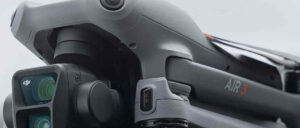
Specification of DJI Air 3
Aircraft
Takeoff Weight
720 g
Dimensions
Folded (without propellers): 207×100.5×91.1 mm (L×W×H)
Unfolded (without propellers): 258.8×326×105.8 mm (L×W×H)
Max Ascent Speed
10 m/s
Max Descent Speed
10 m/s
Max Horizontal Speed (at sea level, no wind)
21 m/s
19 m/s in EU regions.
Max Takeoff Altitude
6000 m
Max Flight Time
46 minutes
Measured by DJI Air 3 flying at a constant speed of 28.8 kph in a windless environment at sea level, with APAS off, AirSense off, camera parameters set to 1080p/24fps, video mode off, and from 100% battery level until 0%. Data is for reference only. Always pay attention to reminders in the app during your flight.
Max Hovering Time
42 minutes
Measured by DJI Air 3 hovering in a windless environment at sea level, with APAS off, AirSense off, camera parameters set to 1080p/24fps, video mode off, and from 100% battery level until 0%. Data is for reference only. Always pay attention to reminders in the app during your flight.
Max Flight Distance
32 km
Max Wind Speed Resistance
12 m/s
Max Pitch Angle
35°
Operating Temperature
-10° to 40° C (14° to 104° F)
Global Navigation Satellite System
GPS + Galileo + BeiDou
Hovering Accuracy Range
Vertical:
±0.1 m (with vision positioning)
±0.5 m (with GNSS positioning)
Horizontal:
±0.3 m (with vision positioning)
±0.5 m (with high-precision positioning system)
Internal Storage
8 GB
Class
C1 (EU)
Camera
Image Sensor
Wide-Angle Camera: 1/1.3-inch CMOS, Effective Pixels: 48 MP
Medium Tele Camera: 1/1.3-inch CMOS, Effective Pixels: 48 MP
Lens
Wide-Angle Camera
FOV: 82°
Format Equivalent: 24 mm
Aperture: f/1.7
Focus: 1 m to ∞
Medium Tele Camera
FOV: 35°
Format Equivalent: 70 mm
Aperture: f/2.8
Focus: 3 m to ∞
ISO Range
Video
Normal and Slow Motion:
100-6400 (Normal)
100-1600 (D-Log M)
100-1600 (HLG)
Night:
100-12800 (Normal)
Photo
100-6400 (12 MP)
100-3200 (48 MP)
Shutter Speed
Wide-Angle Camera
12MP Photo: 1/16000-2 s (2.5-8 s for simulated long exposure)
48MP Photo: 1/8000-2 s
Medium Tele Camera
12MP Photo: 1/16000-2 s (2.5-8 s for simulated long exposure)
48MP Photo: 1/8000-2 s
Max Image Size
Wide-Angle Camera: 8064×6048
Medium Tele Camera: 8064×6048
Still Photography Modes
Wide-Angle Camera
Single Shot: 12 MP and 48 MP
Burst Shooting: 12 MP, 3/5/7 frames; 48 MP, 3/5 frames
Automatic Exposure Bracketing (AEB): 12 MP, 3/5 frames; 48 MP, 3/5 frames at 0.7 EV step
Timed: 12 MP, 2/3/5/7/10/15/20/30/60 s; 48 MP, 5/7/10/15/20/30/60 s
Medium Tele Camera
Single Shot: 12 MP and 48 MP
Burst Shooting: 12 MP, 3/5/7 frames; 48 MP, 3/5 frames
Automatic Exposure Bracketing (AEB): 12 MP, 3/5 frames; 48 MP, 3/5 frames at 0.7 EV step
Timed: 12 MP, 2/3/5/7/10/15/20/30/60 s; 48 MP, 5/7/10/15/20/30/60 s
Photo Format
JPEG/DNG (RAW)
Video Resolution
Wide-Angle Camera:
264/H.265
4K: 3840×2160@24/25/30/48/50/60/100*fps
FHD: 1920×1080@24/25/30/48/50/60/100*/200*fps
2.7K Vertical Shooting: 1512×2688@24/25/30/48/50/60fps
FHD Vertical Shooting: 1080×1920@24/25/30/48/50/60fps
Medium Tele Camera:
H.264/H.265
4K: 3840×2160@24/25/30/48/50/60/100*fps
FHD: 1920×1080@24/25/30/48/50/60/100*/200*fps
2.7K Vertical Shooting: 1512×2688@24/25/30/48/50/60fps
FHD Vertical Shooting: 1080×1920@24/25/30/48/50/60fps
* Recording frame rates. The corresponding video plays as slow-motion video. 4K/100fps only supports H.265.
Video Format
MP4 (MPEG-4 AVC/H.264, HEVC/H.265)
Max Video Bitrate
264/H.265: 150 Mbps
Supported File System
exFAT
Color Mode and Sampling Method
Wide-Angle Camera
Normal: 8-bit 4:2:0 (H.264/H.265)
HLG/D-Log M: 10-bit 4:2:0 (H.265)
Medium Tele Camera
Normal: 8-bit 4:2:0 (H.264/H.265)
HLG/D-Log M: 10-bit 4:2:0 (H.265)
Digital Zoom
Wide-Angle Camera: 1-3x
Medium Tele Camera: 3-9x
Gimbal
Stabilization
3-axis mechanical gimbal (tilt, roll, pan)
Mechanical Range
Tilt: -135° to 70°
Roll: -50° to 50°
Pan: -27° to 27°
Controllable Range
Tilt: -90° to 60°
Pan: -5° to 5°
Max Control Speed (tilt)
100°/s
Angular Vibration Range
±0.0037°
Sensing
Sensing Type
Omnidirectional binocular vision system, supplemented with an infrared sensor at the bottom of the aircraft
Forward
Measurement Range: 0.5-18 m
Detection Range: 0.5-200 m
Effective Sensing Speed: Flight Speed ≤ 15 m/s
FOV: Horizontal 90°, Vertical 72°
Backward
Measurement Range: 0.5-18 m
Effective Sensing Speed: Flight Speed ≤ 14 m/s
FOV: Horizontal 90°, Vertical 72°
Lateral
Measurement Range: 0.5-30 m
Effective Sensing Speed: Flight Speed ≤ 14 m/s
FOV: Horizontal 90°, Vertical 72°
Upward
Measurement Range: 0.5-18 m
Effective Sensing Speed: Flight Speed ≤ 6 m/s
FOV: Front and Back 72°, Left and Right 90°
Downward
Measurement Range: 0.3-14 m
Effective Sensing Speed: Flight Speed ≤ 6 m/s
FOV: Front and Back 106°, Left and Right 90°
Operating Environment
Forward, Backward, Left, Right, and Upward:
Surfaces with discernible patterns and adequate lighting (lux > 15)
Downward:
Surfaces with discernible patterns, diffuse reflectivity > 20% (e.g. walls, trees, people), and adequate lighting (lux > 15)
3D Infrared Sensor
Measurement Range: 0.1-8 m (reflectivity > 10%)
FOV: Front and Back 60°, Left and Right 60°
Video Transmission
Video Transmission System
O4
Live View Quality
Remote Controller:
1080p/30fps, 1080p/60fps
Operating Frequency
4000-2.4835 GHz
5.170-5.250 GHz
5.725-5.850 GHz
5.170-5.250 GHz can be used only in countries and regions where permitted by local laws and regulations.
Transmitter Power (EIRP)
4 GHz:
< 33 dBm (FCC)
< 20 dBm (CE/SRRC/MIC)
5.1 GHz:
< 23 dBm (CE)
5.8 GHz:
< 33 dBm (FCC)
< 30 dBm (SRRC)
< 14 dBm (CE)
Max Transmission Distance (unobstructed, free of interference)
FCC: 20 km
CE: 10 km
SRRC: 10 km
MIC: 10 km
Measured in an unobstructed outdoor environment free of interference. The above data shows the farthest communication range for one-way, non-return flights under each standard. Always pay attention to RTH reminders in the app during your flight.
Max Transmission Distance (unobstructed, with interference)
Strong Interference: urban landscape, approx. 1.5-4 km
Medium Interference: suburban landscape, approx. 4-10 km
Low Interference: suburb/seaside, approx. 10-20 km
Data tested under FCC standard in unobstructed environments with typical interference. Used for reference purposes only and provides no guarantee for actual transmission distance.
Max Transmission Distance (obstructed, with interference)
Low Interference and Obstructed by Buildings: approx. 0-0.5 km
Low Interference and Obstructed by Trees: approx. 0.5-3 km
Data tested under FCC standard in obstructed environments with typical low interference. Used for reference purposes only and provides no guarantee for actual transmission distance.
Max Download Speed
O4:
10 MB/s (with DJI RC-N2 Remote Controller)
10 MB/s (with DJI RC 2)
Wi-Fi 5: 30 MB/s*
* Measured in a laboratory environment with little interference in countries/regions that support both 2.4 GHz and 5.8 GHz. Download speeds may vary depending on the actual conditions.
Lowest Latency
Aircraft + Remote Controller: approx. 120 ms
Depending on the actual environment and mobile device.
Antenna
6 antennas, 2T4R
Wi-Fi
Protocol
11 a/b/g/n/ac
Operating Frequency
400-2.4835 GHz
5.725-5.850 GHz
Transmitter Power (EIRP)
4 GHz:
< 20 dBm (FCC/CE/SRRC/MIC)
5.8 GHz:
< 20 dBm (FCC/SRRC)
< 14 dBm (CE)
Bluetooth
Protocol
Bluetooth 5.2
Operating Frequency
400-2.4835 GHz
Transmitter Power (EIRP)
< 10 dBm
Battery
Capacity
4241 mAh
Weight
267 g
Nominal Voltage
76 V
Max Charging Voltage
17 V
Type
Li-ion 4S
Energy
6 Wh
Charging Temperature
5° to 40° C (41° to 104° F)
Charging Time
80 minutes (with DJI 65W Portable Charger)
Approx. 60 minutes (with DJI 100W USB-C Power Adapter and Battery Charging Hub)
Charger
Input
DJI 65W Portable Charger:
100-240 V (AC), 50-60 Hz, 2 A
DJI 100W USB-C Power Adapter:
100-240 V (AC), 50-60 Hz, 2.5 A
Output
DJI 65W Portable Charger:
USB-C
5 V, 5 A
9 V, 5 A
12 V, 5 A
15 V, 4.3 A
20 V, 3.25 A
5-20 V, 3.25 A
USB-A
5 V, 2 A
DJI 100W USB-C Power Adapter:
Max 100 W (total)
When both ports are used, the max output power of one port is 82 W, and the charger will dynamically allocate the output power of the two ports according to the power load.
Rated Power
DJI 65W Portable Charger: 65 W
DJI 100W USB-C Power Adapter: 100 W
Battery Charging Hub
Input
USB-C: 5-20 V, max 5 A
Output (power accumulation)
Battery Port: 12-17 V, 3.5 A
Output (charging)
Battery Port: 12-17 V, max 5 A
Output (USB)
USB-C:
5 V, 3 A
9 V, 5 A
12 V, 5 A
15 V, 5 A
20 V, 4.1 A
Charging Type
Three batteries charged in sequence.
Compatibility
DJI Air 3 Intelligent Flight Battery
Car Charger
Input
Car Power Input:
7-16 V, 6.5 A, rated voltage 14 V (DC)
Output
USB-C:
5 V, 5 A
9 V, 5 A
12 V, 5 A
15 V, 4.3 A
20 V, 3.25 A
5-20 V, 3.25 A
USB-A:
5 V, 2 A
Rated Power
65 W
Charging Temperature
5° to 40° C (41° to 104° F)
Storage
Recommended microSD Cards
SanDisk Extreme PRO 32GB V30 U3 A1 microSDHC
Lexar 1066x 64GB V30 U3 A2 microSDXC
Lexar 1066x 128GB V30 U3 A2 microSDXC
Lexar 1066x 256GB V30 U3 A2 microSDXC
Lexar 1066x 512GB V30 U3 A2 microSDXC
Kingston Canvas GO! Plus 64GB V30 U3 A2 microSDXC
Kingston Canvas GO! Plus 128GB V30 U3 A2 microSDXC
Kingston Canvas React Plus 64GB V90 U3 A1 microSDXC
Kingston Canvas React Plus 128GB V90 U3 A1 microSDXC
Kingston Canvas React Plus 256GB V90 U3 A1 microSDXC
Samsung EVO Plus 512GB V30 U3 A2 microSDXC
DJI RC-N2 Remote Controller
Model
RC151
Max Operating Time
Without charging any mobile device: 6 hours
When charging a mobile device: 3.5 hours
Max Supported Mobile Device Size
180×86×10 mm (L×W×H)
Operating Temperature
-10° to 40° C (14° to 104° F)
Charging Temperature
5° to 40° C (41° to 104° F)
Charging Time
5 hours
Charging Type
It is recommended to use a 5V/2A charger.
Battery Capacity
72 Wh (3.6 V, 2600 mAh × 2)
Type
18650 Li-ion
Dimensions
22×149.95×45.25 mm (L×W×H)
Weight
375 g
Supported Mobile Device Port Type
Lightning, USB-C, Micro-USB
Using a mobile device with Micro-USB port requires the DJI RC-N1 RC Cable (Standard Micro USB connector), which is sold separately.
Video Transmission Operating Frequency
4000-2.4835 GHz
5.170-5.250 GHz
5.725-5.850 GHz
Video Transmission Transmitter Power (EIRP)
4 GHz:
< 33 dBm (FCC)
< 20 dBm (CE/SRRC/MIC)
5.1 GHz:
< 23 dBm (CE)
5.8 GHz:
< 33 dBm (FCC)
< 14 dBm (CE)
< 30 dBm (SRRC)
Also Read:- DJI Matrice 300 RTK

